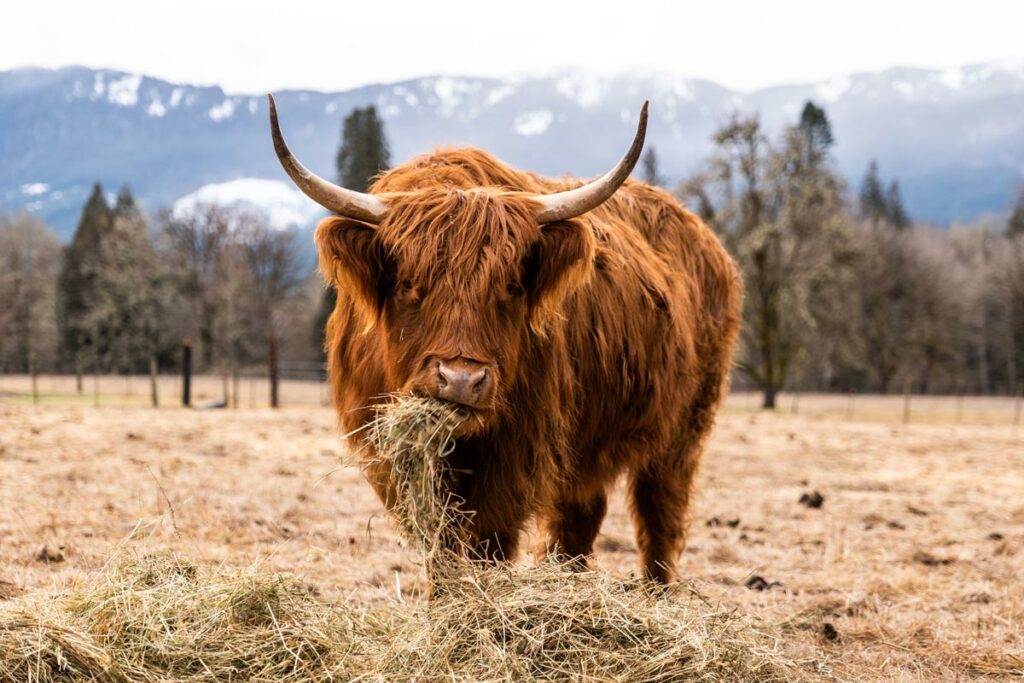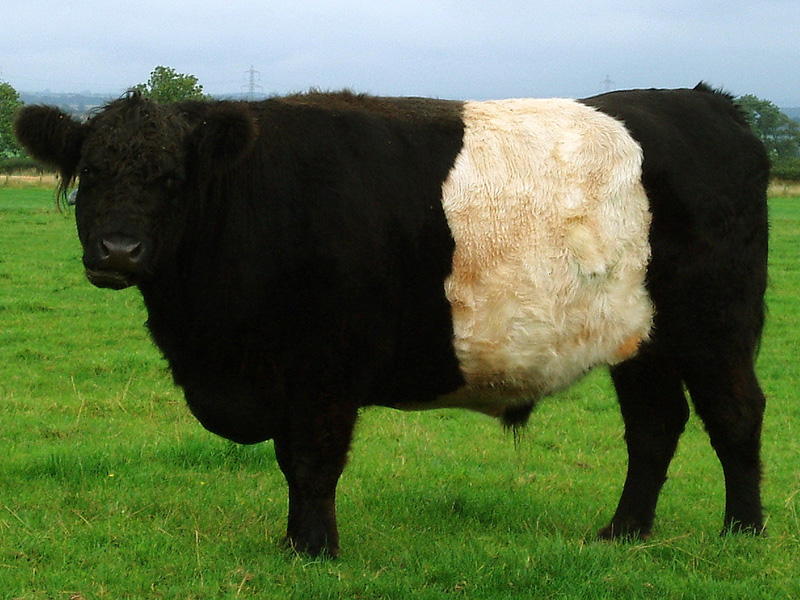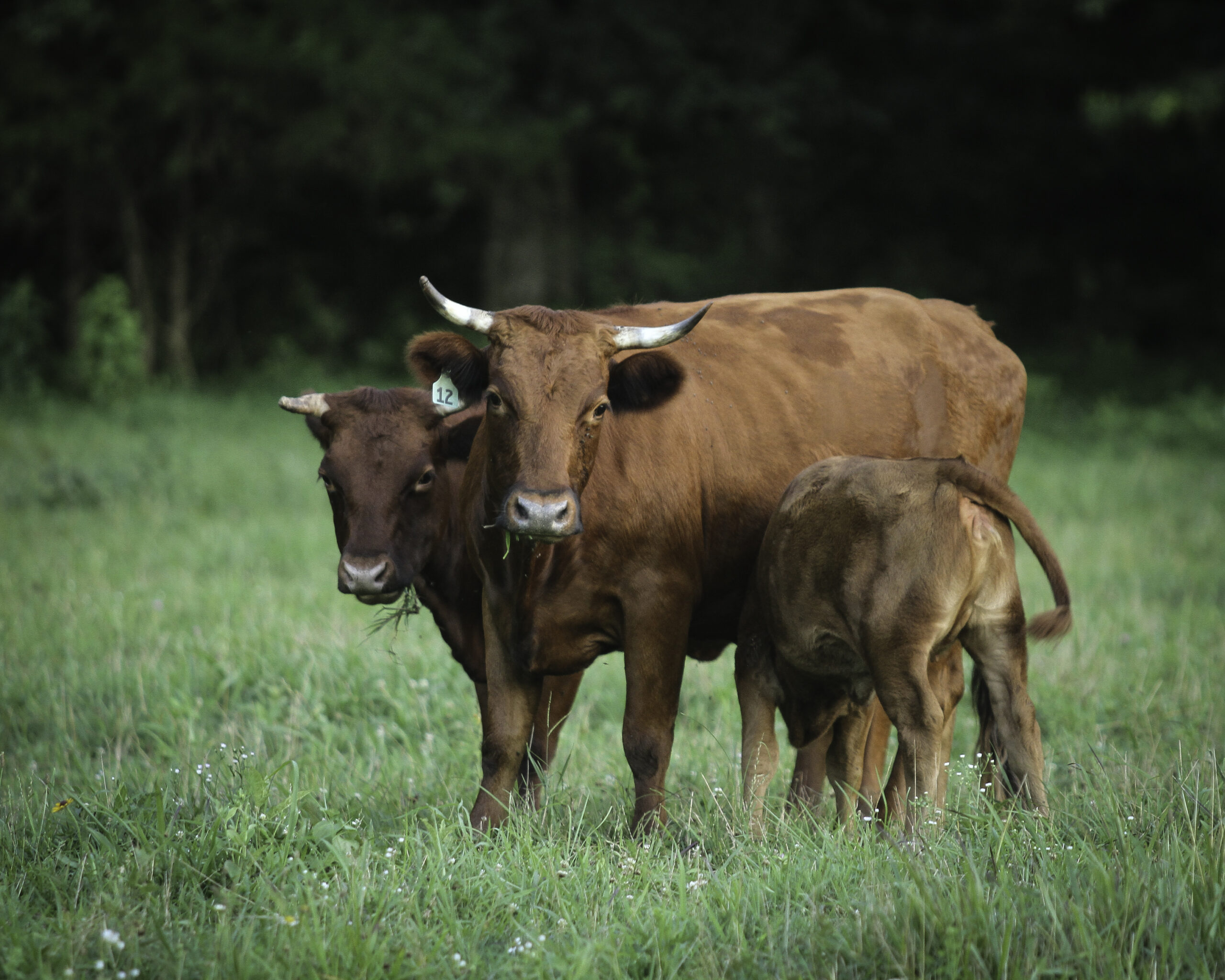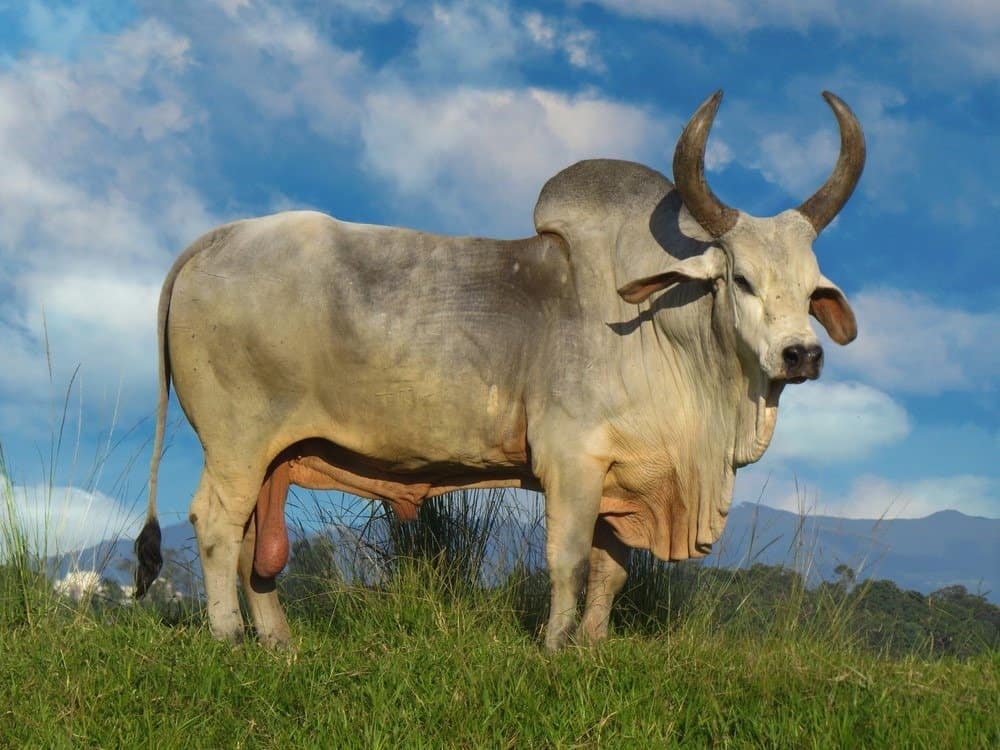Cattle are one of the most important domesticated animals in the world, providing us with meat, milk, and leather goods. While most people are familiar with cattle, many are not aware of the various breeds that exist.
For example, did you know that there are over 800 different breeds of cattle worldwide? In this article, we will explore 10 different types of cattle that you may not have known existed.
You are reading: Discover The 10 Different Types Of Cattle You Never Knew Existed
Whether you are a cattle expert or just curious about these fascinating animals, read on to learn more about the different breeds of cattle that we rely on for food, milk, and work.

10 Different Types Of Cattle You Never Knew Existed
Belted Galloway

OLYMPUS DIGITAL CAMERA
Belted Galloway is a traditional Scottish breed of beef cattle that was established as a separate breed in 1921. The exact origin of the breed is unclear, but the white belt around their middle, which distinguishes them from black Galloway cattle, is often surmised to be the result of cross-breeding with the similarly-colored Dutch Lakenvelder breed.
Belted Galloways are medium-sized, with cows weighing about 1,000 lbs and bulls about 1,600 lbs. They are well adapted to harsh climatic conditions, hill terrain, and rough grazing on coarse grasses, and are often kept out throughout the winter, regardless of the weather.
Belted Galloways are primarily raised for beef, but they may also be kept for ornament or for conservation grazing or vegetation management.
Cattle reared on forage alone may take up to four years to be ready for slaughter, and beef from such cattle may have higher-than-usual levels of omega-3 polyunsaturated fatty acids.
The Belted Galloway Society is a cattle association that promotes the breed and provides information to breeders and enthusiasts.
Irish Moiled
The Irish Moiled is a rare breed of cattle that originated in Ireland, specifically in County Leitrim, County Sligo, County Down, and County Donegal. They are a dual-purpose breed, reared for both beef and milk, and are known for their hardiness and adaptability to harsh environments.
The breed was once relatively popular throughout Ireland in the 19th century due to their ability to produce both milk and meat, but their popularity declined with the introduction of more specialized breeds.
By the late 1970s, there were only 30 cows and 2 bulls remaining, and the breed was marked as “critically endangered” by the Rare Breed Survival Trust. Today, the Irish Moiled is still considered a rare breed, but efforts are being made to preserve and promote the breed.
The Irish Moiled Cattle Society was established to promote the breed and provide information to breeders and enthusiasts.
Read more : Types Of Salmon And Their Distinctive Features
Irish Moiled cows are polled, meaning they do not grow horns, and are typically red with a white line on their back and stomach. They are known for producing high-quality beef and milk from grass, and are considered a truly dual-purpose animal.
Miniature Jersey
Miniature Jersey is a breed of cattle that is a smaller version of the Jersey breed. Here are some facts about Miniature Jersey cattle:
– Miniature Jersey cattle are smaller than regular Jersey cattle, making them a good option for homesteaders and small dairy farmers with limited space.
– Miniature Jersey cows typically weigh between 500 and 700 pounds, while bulls weigh between 700 and 1,000 pounds.
– Miniature Jersey cattle are a rare heritage breed, and there are several registries that keep track of them.
– Miniature Jersey cattle are known for their high-quality milk, which is rich in butterfat and protein.
– Miniature Jersey cattle are typically grass-fed and milked once a day.
– Miniature Jersey cattle are often A2/A2, which means they produce milk that is easier to digest for some people.
Overall, Miniature Jersey cattle are a good option for those who want to raise cattle but have limited space or resources. They are a rare and unique breed that produces high-quality milk and can be a great addition to a homestead or small farm.
Dexter Cattle

Dexter cattle are a small breed of cattle that originated in County Kerry, Ireland in the 18th century. Here are some key facts about Dexter cattle:
Appearance:
– Dexter cattle are small and compact in appearance, with short legs compared to other breeds.
– They are typically black, but red and dun varieties also exist.
– They have mid-sized, black-tipped white horns that arc upward.
Use:
– Dexter cattle are a dual-purpose breed, reared for both milk and beef.
– They are very hardy and efficient grazers, able to thrive on poor land.
– Milk yields average about 2250 kg per lactation, although some farms may reach an average of 3000 kg.
– The meat is often less good than that of other breeds, especially if it is from a very short-legged animal.
Advantages:
– Dexter cattle are a good option for homesteaders and small dairy farmers with limited space.
– They have low feed requirements and are able to convert grass into meat efficiently.
– They are easy to breed and handle, making them a good option for beginners.
Overall, Dexter cattle are a hardy and efficient breed that is well-suited for small farms and homesteads. They are a dual-purpose breed, producing both milk and beef, and are known for their adaptability to harsh environments and low feed requirements.
Highland Cattle
Highland cattle are a Scottish breed of cattle that are known for their long, shaggy coats and long horns. Here are some key facts about Highland cattle:
Appearance:
– Highland cattle have long, shaggy coats that can be a range of colors, including red, ginger, black, dun, yellow, white, grey, tan, silver, and brindle.
– They have distinctive horns that curve upward and can span up to six feet.
Use:
– Highland cattle are primarily raised for their meat, which is known for its tenderness and flavor.
– They are also used for conservation grazing, as they are able to thrive in harsh environments and can help maintain landscapes.
– Highland cattle are known for their hardiness and adaptability to harsh climates, making them a good option for small farms and homesteads.
Advantages:
– Highland cattle are disease-resistant and intelligent, making them easy to handle and breed.
– They are able to convert grass into meat efficiently, making them a good option for sustainable farming.
– Highland cattle are a heritage breed that has been around for centuries, and they are still popular today due to their unique appearance and hardiness.
Overall, Highland cattle are a hardy and adaptable breed that is well-suited for small farms and homesteads. They are primarily raised for their meat, but they can also be used for conservation grazing and vegetation management. Their unique appearance and hardiness make them a popular choice for farmers and enthusiasts alike.
Beefalo Cattle
Beefalo cattle are a hybrid breed of cattle that are a cross between domestic cattle and American bison. Here are some key facts about Beefalo cattle:
– Beefalo cattle are primarily cattle in genetics and appearance, with the breed association defining a full Beefalo as one with three-eighths (37.5%) bison genetics, while animals with higher percentages of bison genetics are called “bison hybrids”.
– The breed was created to combine the characteristics of both animals, with the goal of producing a hardy, efficient animal that could thrive in harsh environments and produce high-quality meat.
– Beefalo cattle are known for their hardiness, foraging ability, calving ease, and meat quality, which are traits inherited from the bison.
– They are also known for their fertility, milking ability, and ease of handling, which are traits inherited from the bovine.
– Beefalo cattle are a rare breed, but they are gaining popularity due to their unique characteristics and the high-quality meat they produce.
– The American Beefalo Association is the primary breed association for Beefalo cattle, and there are several registries that keep track of them.
Overall, Beefalo cattle are a unique and hardy breed that combines the best traits of both domestic cattle and American bison. They are primarily raised for their high-quality meat, but they are also known for their adaptability to harsh environments and low feed requirements.
Zebu Cattle

Zebu cattle, also known as humped cattle or indicine cattle, are a species or subspecies of domestic cattle that originated in South Asia. Here are some key facts about Zebu cattle:
Appearance:
– Zebu cattle are distinguished from taurine cattle by their fatty hump on their shoulders, large dewlap, and sometimes drooping ears.
– They are usually red or grey in color, are horned, and have loose skin and large ears.
Use:
– Zebu cattle are used for a variety of purposes, including as draught and riding animals, beef cattle, dairy cattle, and for byproducts such as hides, dung for fuel and manure, and horn for knife handles.
– In India, they are considered sacred and are only used for draft and milk.
– Miniature Zebu, a smaller version of the breed, are kept as pets and are used for junior rodeos, FFA, and 4H activities.
Advantages:
– Zebu cattle are well adapted to withstanding high temperatures and are farmed throughout the tropics.
– They are disease-resistant and require little care, making them a good option for sustainable farming.
– Zebu cattle are valued for their milk, meat, leather, and horns, and are an important part of the economy in many countries.
Overall, Zebu cattle are a hardy and adaptable breed that is well-suited for farming in tropical environments. They are used for a variety of purposes and are valued for their milk, meat, and byproducts. The Miniature Zebu is a smaller version of the breed that is often kept as a pet or used for junior rodeos and other activities.
Texas Longhorn
Read more : Discover 7 Animals Roaming Atop North Carolina’s Tallest Mountain
Texas Longhorn is an American breed of beef cattle that is characterized by its long horns, which can span more than 8 feet from tip to tip. Here are some key facts about Texas Longhorn:
Appearance:
– Texas Longhorn cattle are known for their long, distinctive horns, which can be curved or straight and can span up to 10 feet.
– They are typically red or white in color, but can also be spotted or brindle.
– They have long, lean bodies and are well-adapted to hot, dry climates.
Use:
– Texas Longhorn cattle are primarily raised for their meat, which is lean and flavorful.
– They are also used for rodeo events, such as bull riding and steer wrestling.
– Texas Longhorn cattle are a hardy breed that is well-suited for sustainable farming in harsh environments.
Advantages:
– Texas Longhorn cattle are disease-resistant and require little care, making them a good option for sustainable farming.
– They are able to convert grass into meat efficiently, making them a good option for sustainable farming.
– Texas Longhorn cattle are a heritage breed that has been around for centuries, and they are still popular today due to their unique appearance and hardiness.
Overall, Texas Longhorn cattle are a unique and hardy breed that is well-suited for sustainable farming in harsh environments. They are primarily raised for their meat, but they are also used for rodeo events.
Their unique appearance and hardiness make them a popular choice for farmers and enthusiasts alike.
Ankole-Watusi
Ankole-Watusi is a breed of domestic cattle that originated from the Ankole group of Sanga cattle breeds of east and central Africa. Here are some key facts about Ankole-Watusi:
Appearance:
– Ankole-Watusi cattle are medium-sized and elegant in appearance, with a straight topline and a sloping rump.
– They may have a neck hump, but it is not required.
– They come in a variety of colors, including red, white, and spotted.
– The most noticeable feature of the breed is its horns, which have a large base and are long and symmetrical.
Use:
– Ankole-Watusi cattle are primarily raised for their meat, which is lean and flavorful.
– They are also used for draft and riding animals, and for byproducts such as hides, dung for fuel and manure, and horn for knife handles.
– Ankole-Watusi cattle are known for their adaptation to harsh environments, excellent maternal abilities, high butterfat milk, and lean beef.
Advantages:
– Ankole-Watusi cattle are disease-resistant and require little care, making them a good option for sustainable farming.
– They are able to convert grass into meat efficiently, making them a good option for sustainable farming.
– Ankole-Watusi cattle are a heritage breed that has been around for centuries, and they are still popular today due to their unique appearance and hardiness.
Overall, Ankole-Watusi cattle are a unique and hardy breed that is well-suited for sustainable farming in harsh environments. They are primarily raised for their meat, but they are also used for draft and riding animals, and for byproducts such as hides and horn.
Their unique appearance and hardiness make them a popular choice for farmers and enthusiasts alike.
White Park
White Park cattle is a breed of domestic cattle that originated in Britain and is known for its distinctive white coat with colored points on the ears and feet. Here are some key facts about White Park cattle:
Appearance:
– White Park cattle are medium-large, long-bodied bovines with a distinctive porcelain white coat and colored (black or red) points on the ears and feet.
– The horns of the cows can vary in shape, but the breed is typically horned.
Use:
– White Park cattle are primarily raised for their meat, which is lean and flavorful.
– They are also used for draft and riding animals, and for byproducts such as hides, dung for fuel and manure, and horn for knife handles.
– White Park cattle have been exported to several countries, including Denmark, Latvia, Germany, and Australia.
Advantages:
– White Park cattle are disease-resistant and require little care, making them a good option for sustainable farming.
– They are able to convert grass into meat efficiently, making them a good option for sustainable farming.
– White Park cattle are a heritage breed that has been around for centuries, and they are still popular today due to their unique appearance and hardiness.
Overall, White Park cattle are a unique and hardy breed that is well-suited for sustainable farming. They are primarily raised for their meat, but they are also used for draft and riding animals, and for byproducts such as hides and horn.
Their unique appearance and hardiness make them a popular choice for farmers and enthusiasts alike.
FAQS
1. What are the 10 different types of cattle?
The 10 different types of cattle are Belted Galloway, Irish Moiled, Miniature Jersey, Dexter Cattle, Highland Cattle, Beefalo Cattle, Zebu Cattle, Texas Longhorn, Ankole-Watusi, and White Park.
2. What are some unique characteristics of these cattle breeds?
Each breed has its own unique characteristics, such as the Belted Galloway’s distinctive white belt around its middle, the Highland Cattle’s long, shaggy hair, and the Ankole-Watusi’s large, symmetrical horns.
3. What are these cattle breeds primarily used for?
These cattle breeds are primarily used for meat, milk, and draft purposes, depending on the breed. Some breeds, such as the Belted Galloway and Highland Cattle, are also used for conservation grazing and vegetation management.
4. Are these cattle breeds rare?
Some of these cattle breeds, such as the Irish Moiled and White Park, are considered rare breeds. Others, such as the Texas Longhorn and Zebu Cattle, are more common.
Source: https://petstutorial.com
Category: Animals










